Project 1
Sergei Mikhailovich Prokudin-Gorskii was convinced, as early as 1907, that color photography was the wave of the future. His idea was simple: record three exposures of every scene onto a glass plate using a red, a green, and a blue filter. The goal of this project is to take the digitized Prokudin-Gorskii glass plate images and, using image processing techniques, automatically produce a color image with as few visual artifacts as possible. I will explain how I extract the three color channel images, place them on top of each other, and align them so that they form a single RGB color image.
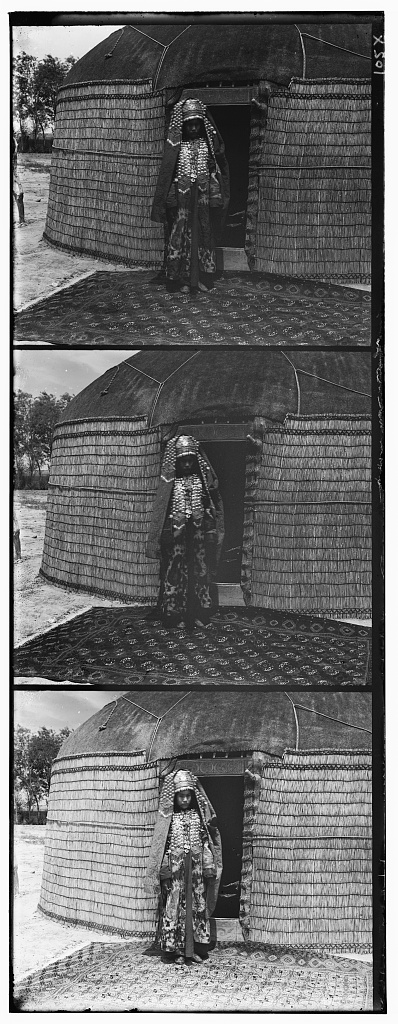
Single-scale Implementation
The algorithm computes the best displacement between two images as follows:
- Exhaustively search over a window of possible displacements
(from -15 to 15 pixels) around the center of one image.
- For each possible displacement, calculate a score using Structural Similarity Index (SSIM).
- Select the displacement with the best score.
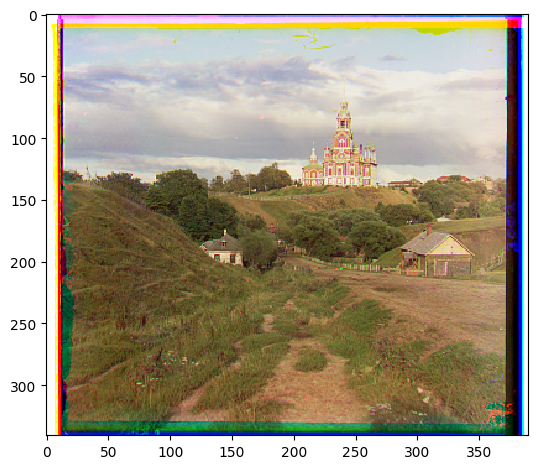
Cathedral
G->B: [2, 5]
R->B: [3, 12]
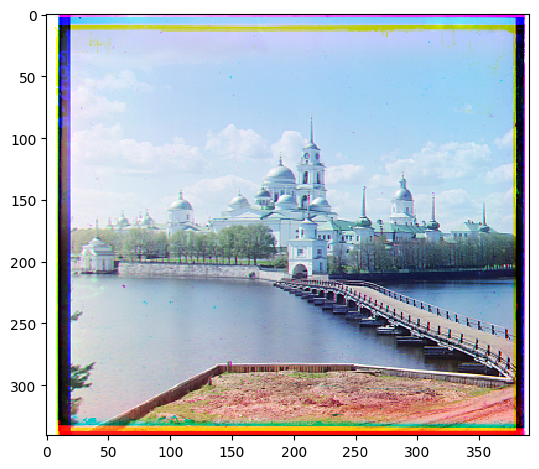
Monastery
G->B: [2, -3]
R->B: [2, 3]
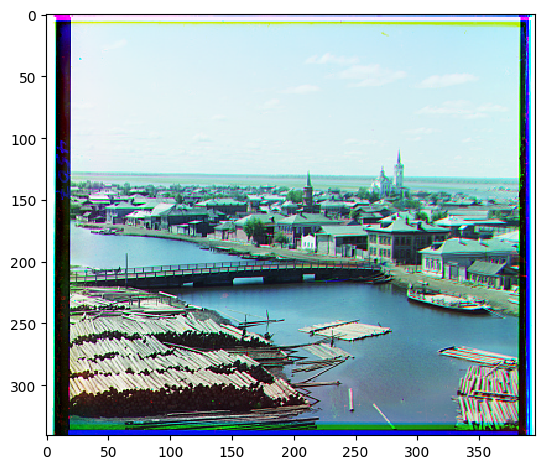
Tobolsk
G->B: [2, 3]
R->B: [3, 6]
Multi-scale Pyramid Implementation
For larger images, the single-scale implementation proves to be too slow. I implemented a coarse-to-fine pyramid speedup to handle the .tif ones provided in the directory. Given two images, the algorithm works recursively as follows:
- Base case: If the images' max dimension is less than 400 pixels, return the single-scale algorithm's best displacement.
- Resize the two images to be half their size.
- Recursively pass the resized images to get the best displacement.
- Going up the stack, take the previous call's displacement and double each coordinate.
- Use this doubled-vector as the initial coordinates and search around a 2x2 window with the single-scale displacement algorithm.

Church
G->B: [2, -5]
R->B: [-4, 38]
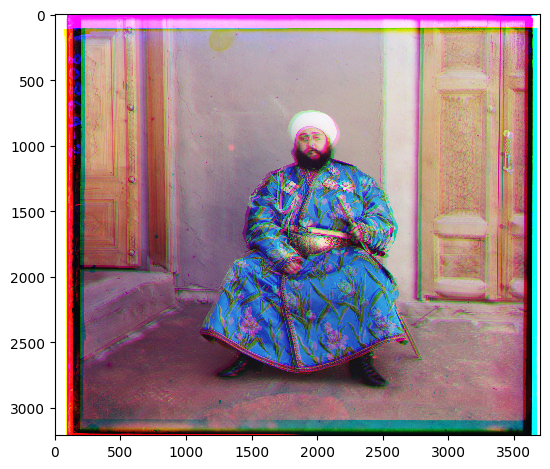
Emir
G->B: [6, 34]
R->B: [50, 106]
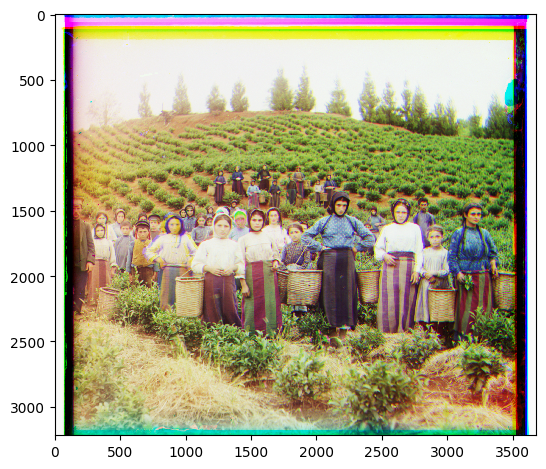
Harvesters
G->B: [8, 58]
R->B: [6, 118]
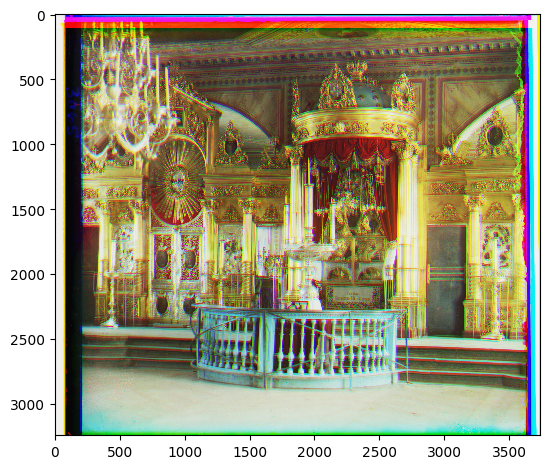
Icon
G->B: [6, 44]
R->B: [14, 106]
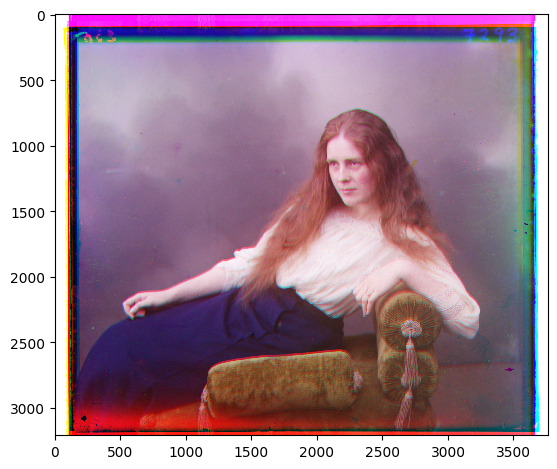
Lady
G->B: [9, 54]
R->B: [14, 102]
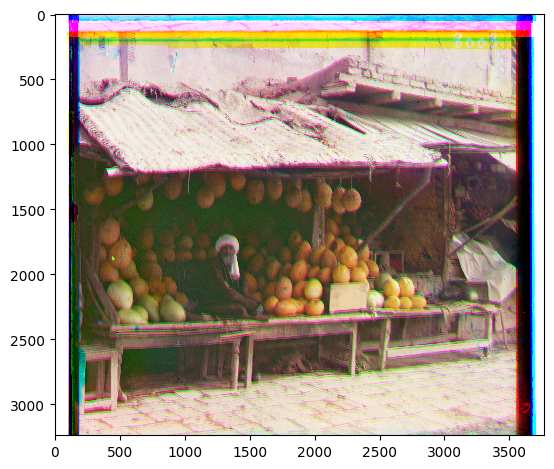
Melons
G->B: [4, 70]
R->B: [12, 180]
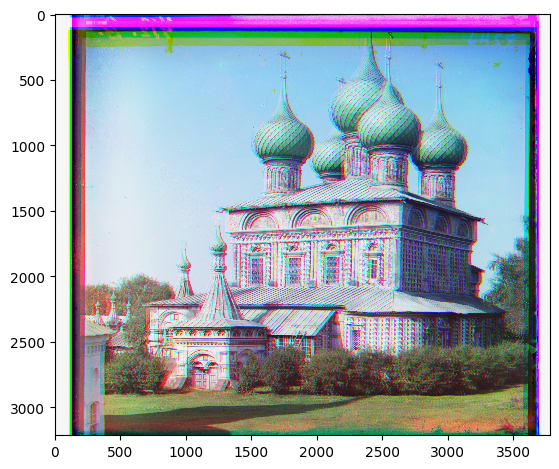
Onion Church
G->B: [22, 50]
R->B: [6, 102]
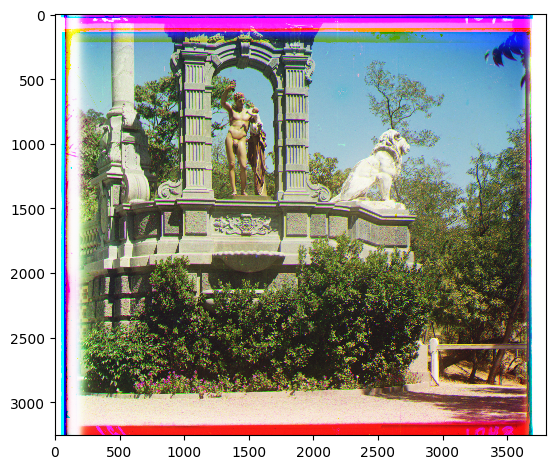
Sculpture
G->B: [-6, 28]
R->B: [-22, 138]
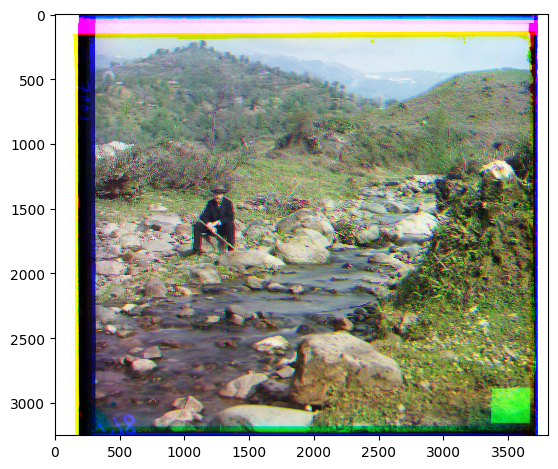
Self Portrait
G->B: [22, 70]
R->B: [18, 166]
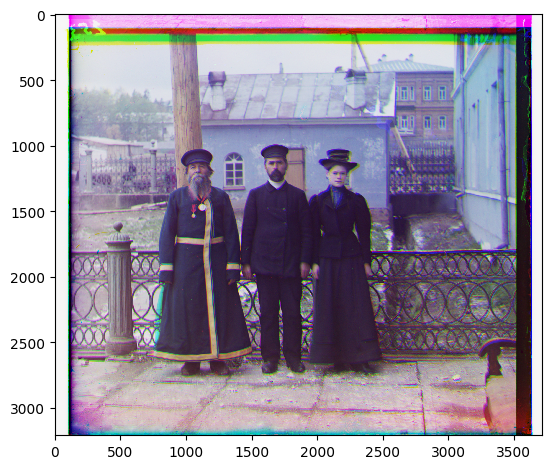
Three Generations
G->B: [6, 38]
R->B: [6, 102]
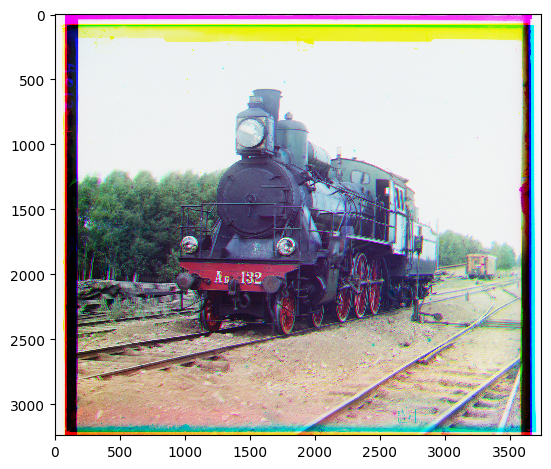
Train
G->B: [6, 38]
R->B: [6, 85]
A few more images...

Sunset
G->B: [2, -5]
R->B: [-4, 38]
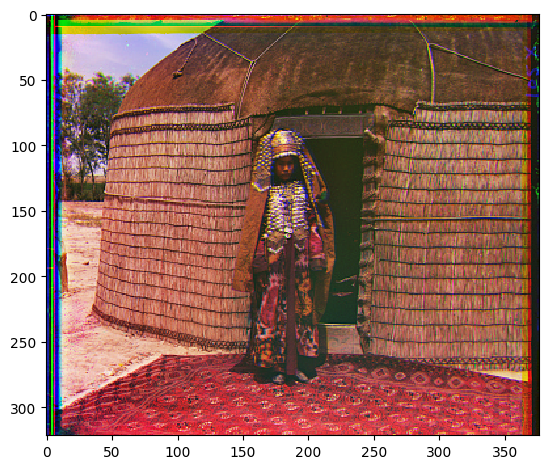
Woman
G->B: [6, 34]
R->B: [50, 106]
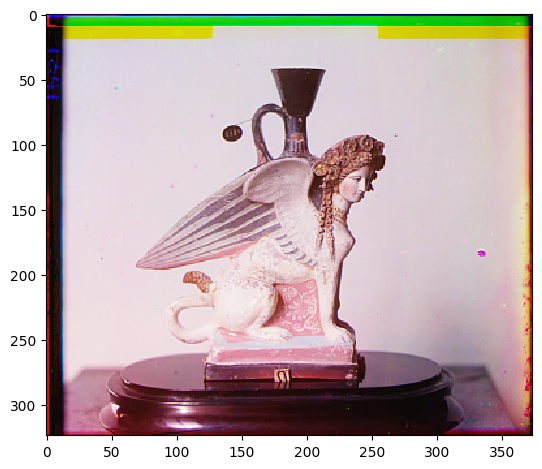
Vase
G->B: [8, 58]
R->B: [6, 118]
Bells & Whistles: Automatic Cropping
I created an algorithm to detect borders around the images, which I assumed could be a possible culprit for noise. My idea was to use variance as a proxy for edge detection since the border seems to be almost fully one color. I calculate column-wise and row-wise variance and set a threshold so that any variance greater than the threshold must no longer be a border. My cropping method was able to fully crop out both the black and white borders around the image, but only slightly sharpened the image.
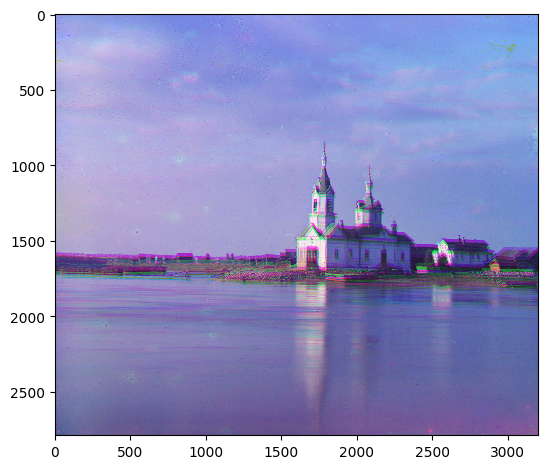
Church
G->B: [3, -2]
R->B: [-4, 38]
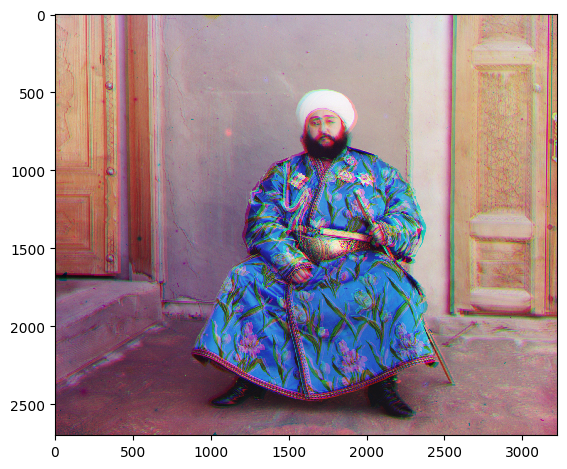
Emir
G->B: [6, 34]
R->B: [50, 86]
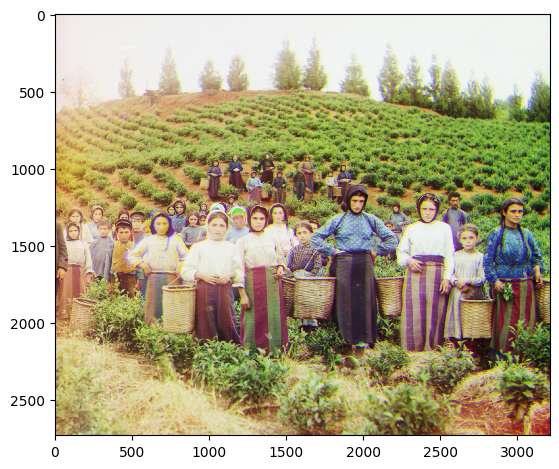
Harvesters
G->B: [6, 54]
R->B: [6, 118]
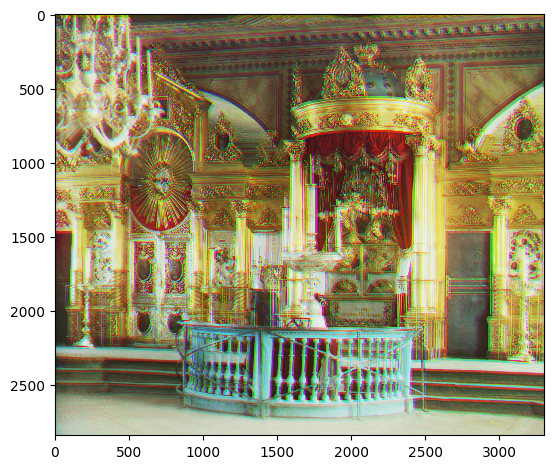
Icon
G->B: [6, 44]
R->B: [22, 104]
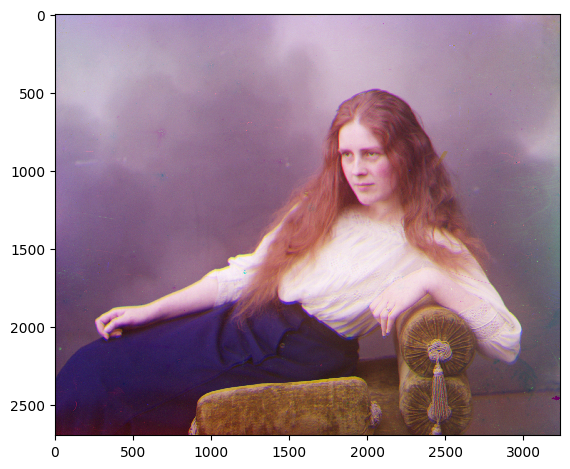
Lady
G->B: [8, 54]
R->B: [14, 102]
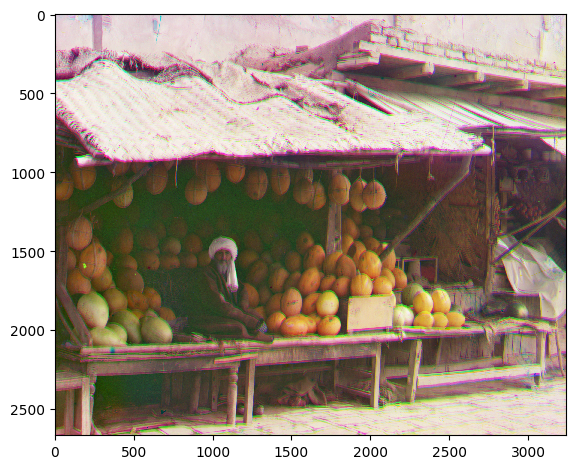
Melons
G->B: [7, 70]
R->B: [10, 180]
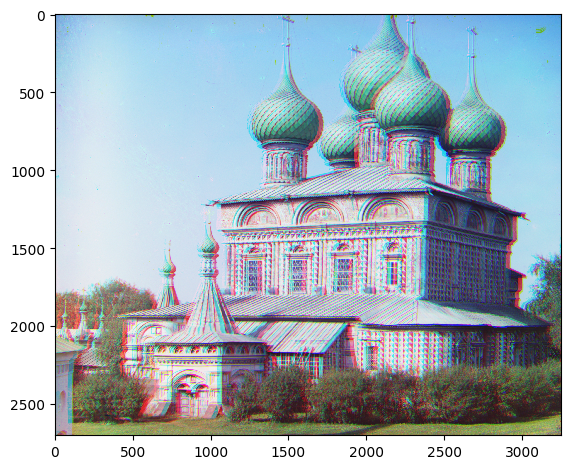
Onion Church
G->B: [21, 37]
R->B: [6, 102]
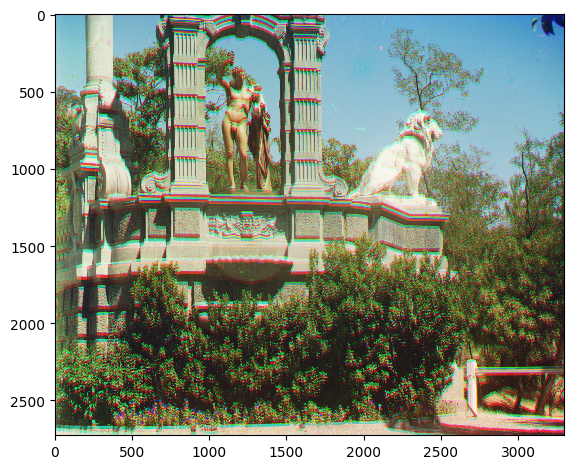
Sculpture
G->B: [-6, 28]
R->B: [-22, 146]
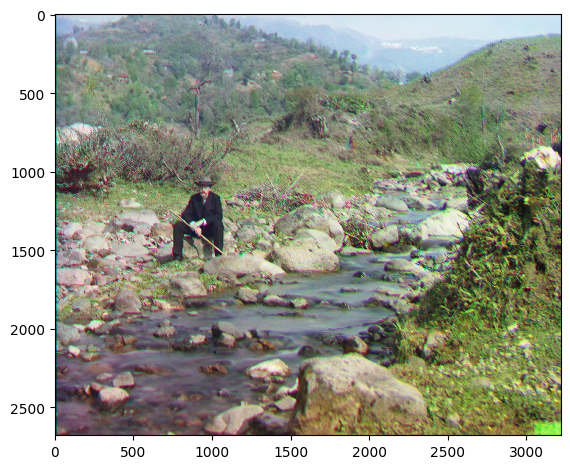
Self Portrait
G->B: [22, 70]
R->B: [22, 166]
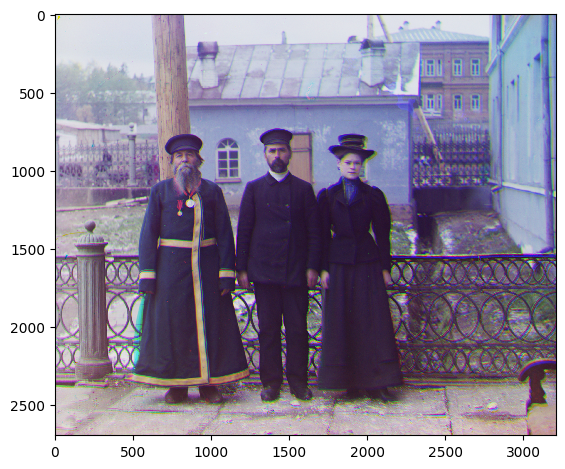
Three Generations
G->B: [6, 38]
R->B: [6, 102]
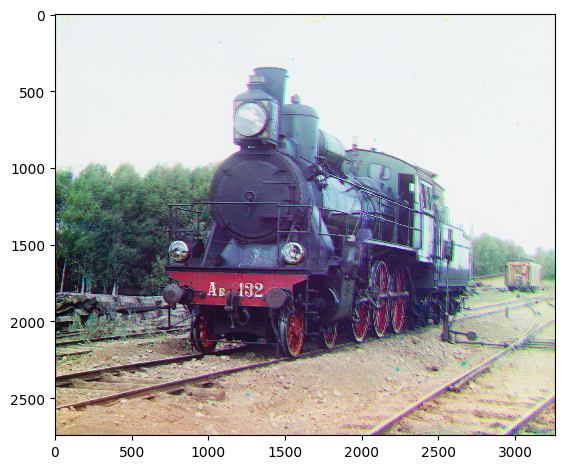
Train
G->B: [-2, 38]
R->B: [34, 102]





























